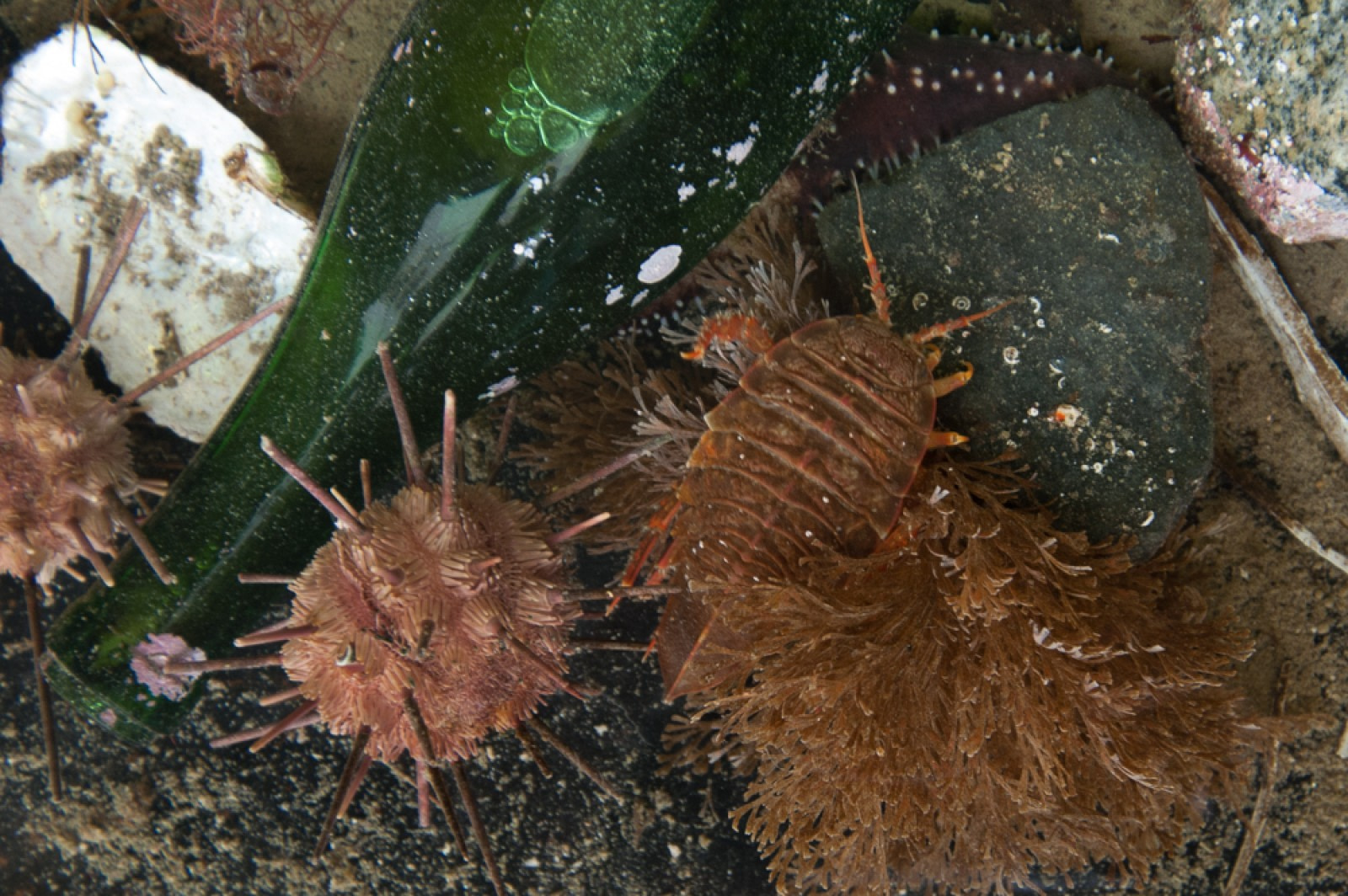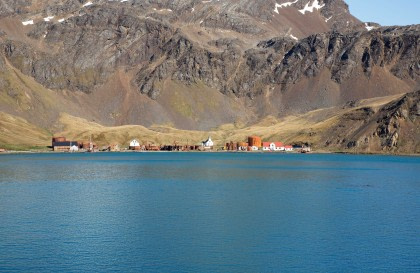Two thousand feet below the surface of the Southern Ocean, in the benthic zone, dwells an ancient-looking creature with four antennae, two pairs of jaws, plates on its back, and several pairs of spiny legs. It’s an intimidating sight, but Giant Antarctic Isopods (Glyptonotus antarcticus) are relatively harmless animals that are far more interested in finding their next meal than anything.
There are many species of isopods that live throughout the world, but the isopods you’ll sail over during your Antarctica cruise in particular have evolved to live in a very particular environment. Freezing cold conditions with very little light aren’t very attractive to most deep-water species, but just perfect for these strange creatures!
“Giant” is an overstatement
On average, the Giant Antarctic Isopod grows to 9cm (3.5in.) in length. This may not seem very large, but factors including low light levels, freezing cold water, and a lack of oxygen prevent these isopods from growing very large. Other species of isopods, including the Giant Isopod, have been known to grow up to 40 cm (16 inches) in length!
Giant Antarctic isopods almost exclusively eat carrion
Isopods are opportunistic scavengers, meaning that they’ll eat just about anything that crosses their path, no matter how long it’s been dead. Anything that makes its way down to their part of the neighborhood in the benthic zone is fair game, and makes for a reliable source of food, as long as there’s no competition. While food is available, isopods will gorge themselves to ensure they have enough to survive until their next meal. As a bottom feeder and a scavenger, you may have to wait a while until something ends up that far down in the ocean. Besides carrion, isopods have also been observed to feast on small, marine prey items such as young sponges and small fish.
Their metabolism is extremely slow
Living 600 meters (2,000 feet) down in the ocean has its drawbacks. Since food can be scarce at times this deep down, isopods rely on their impressively slow metabolism to keep them going. This means limiting their bodily movements as much as possible, and not really exerting any energy unless they encounter a meal or a predator. A slow metabolism can really come in handy when food is scarce, and isopods have been observed to go a whole eight weeks without any need for food.
No bugs here!
Don’t let appearance fool you. Isopods may look like a common garden insect, but they belong to the extremely diverse group of organisms called ‘crustaceans’, and are more closely related to crabs, shrimp, and pill bugs than they are to any true insect.
Antarctic giant isopods are skillful swimmers
In addition to swimming upright and straightforward like a normal sea creature, the Giant Antarctic Isopod can also swim upside down, and does so with great gusto! Scientists are unsure why they exhibit this behavior, but it is very well documented.
Antennae lead the way
To help guide them around the murky depths of the ocean, giant isopods rely on two sets of antennae. Additionally they have two large, fixed, compound eyes, much like an insect’s, to further help them find their way throughout their dark environment. These eyes, however, have been found to be more ornamental than anything, and don’t necessarily assist in the ways of vision, according to researchers. Even with these highly specialized eyes, their vision is very poor, thanks to their lightless environment.
Even with poor vision, their eyes glow
If any light happens to shine on their eyes, a part of their eye called the tapetum, which is located at the back of the retina, reflects any visible light back through the retina, creating a glowing effect. The tapetum has evolved in many different species of animals, and serves to assist with vision in low light conditions.
To deter predators, Antarctic giant isopods will roll into a ball
Just like their cousins, the pill bugs, isopods will roll up into a tight ball when faced with a predator. Only when they’re certain that the predator has moved on will they unroll. If their hard, external segments don’t protect them from predation, they can always rely on their four pairs of sharp jaws, which are meant for ripping prey apart, to help them out. Considering their size, number of jaws and overall diet, the isopod doesn’t seem like a very attractive prey item.
…Or they warn with their legs
It can be difficult to maneuver three pairs of small legs, and four pairs of large, spiny legs. The only time having this many legs comes in handy is when a predator presents itself. In this case, the isopod will raise its legs up in the air and try to make itself appear as large and as dangerous as possible. Hopefully this display makes a potential predator rethink its decision.
Females protect the eggs
Not only do isopods have the largest eggs of any marine invertebrate at 1.3cm in length, but the female will carry them with her in a special ‘brood pouch’ until the babies are ready to hatch. To minimize threats from predators, females will bury themselves in the soft, sandy bottoms of the ocean and sit with her eggs until they are fully developed. This is a time when having a slow metabolism definitely comes in handy.






